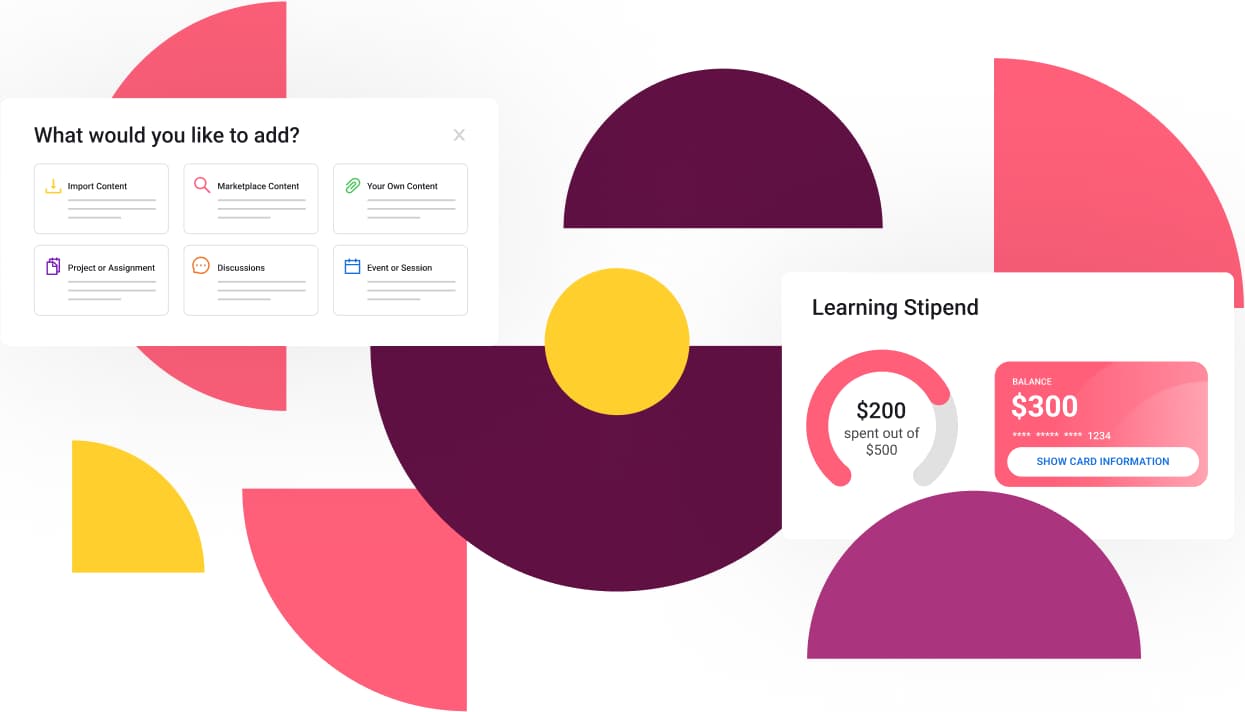Skill-building requires a new approach: Academy 3.0
Your employees want to learn and grow, but for many businesses, training programs are outdated. That may be one reason top talent is heading for the doors.
The Original Corporate Academy, 1.0
“In the mid-1950s, the president of GE, Ralph Cordiner, decided the biggest limitation to his company’s growth was its roster of managers. GE was expanding exponentially, adding new facilities in different locations, and its supply of high-quality general managers was growing thin. Cordiner needed to groom people he could trust to run these far-flung outposts—people deeply indoctrinated in the company’s culture.
So in 1956 GE bought a parcel of leafy land about an hour north of New York City and established its Crotonville management training center. GE claims it is the oldest corporate university in the country. The first seminar Crotonville offered was 13 weeks long, which sounds absurd today—no modern manager could spend a full quarter of the year solely on professional development. But that initial course paid dividends: Among its students was Reginald Jones, a future GE CEO.” (Via Slate)
The corporate academy is a storied 20th century U.S. institution, beginning with GE’s Crotonville followed by business giants from Accenture to Zenith. The goal was to create a talent pipeline of managers to keep companies chugging ahead.
Academy 1.0 was built for a different age and pace. Physical campuses, like Crotonville, were required for global companies before the ease of global communication. They replicated the centuries old university model—only instead of learning Biology 100 you were taking courses on the topics of the business.
Investments in professors, housing, campus and so on, made these academies rigid, expensive, and resource heavy.
“Only the richest of firms could afford this kind of investment. “
Though capital intensive, when employees stuck around with a single company their entire career it was easier for the company to trust they would recoup the costs and reap the long-term benefits.
The experience, overall, replicated that of a fine university, and employees often viewed such an opportunity as a real benefit, to breath, learn, and re-engage.
The Rise (and Shortfalls) of eLearning, Academy 2.0
Rolling into the 21st century, with the computing power and the internet in the hands of most every employee, led to excitement about on-demand online learning. With the potential to scale to more employees at a lower cost, the online learning revolution began. We saw the inception of elearning platforms, home-grown at first, then more commonly from third-parties, that businesses could access at a fraction of the cost of a physical academy.
Professors didn’t have to instruct live, they could pre-record content, which could then be re-used, with less expensive facilitators involved. Content could even be authored by employees. And access could be on any device, anywhere, via an LMS.
As is often the case between major technological leaps, it takes time to imagine anew. These online courses were often little better than recording a professor or PowerPoint slides with a voice-over.
“The experience tended to be linear, rigid, and not especially well liked. “
Now, instead of dedicated time away on a beautiful campus, surrounded by others also dedicated to learning, it was required that you work learning into your regularly scheduled week, often on top of your regular responsibilities. Another task to remember and check-the-box on.
Outside of mandatory training, the Corporate Academy 2.0, resulted in poor completion and engagement. “E-learning was boring, tedious, and hard to complete–and it missed practice, hands-on experience, and coaching,” said HR analyst Josh Bersin. “In 2015, we did a study of the net-promoter score of L&D, and it was negative.” In other words, without engagement, the learner isn’t absorbing content and learning becomes something not worth prioritizing.
Which begs the question, what did companies, and employees, get for their time and money? In 2020 corporate America spent $165 billion on L&D. The Harvard Business Review (HBR) reports:
- 64% spent internally vs. 36% on external vendors and course providers
- 75% of 1,500 managers surveyed from 50 companies were “dissatisfied” with training programs
- 70% of employees say they aren’t taught the skills needed to do their jobs
- Just 12% of employees apply what they learn in training to their jobs
HBR calls this “the great training robbery.”
Academies 2.0 was a transitional phase. When TV programming was just emerging, competing with and supplanting radio programming, much of the first TV ‘shows’ were just the same radio narrators being filmed speaking into their microphone. Academies 2.0 in many ways was simply the moving online of the same 1950’s-style corporate university content.
Rethinking the Academy, 3.0
As the rate of technology change accelerated and began to diminish the shelf-life of our skills, it has yielded a skills “emergency” globally. The World Economic Forum expects 87 million jobs to be lost to automation and 97 million new jobs created that demand skills that don’t yet exist—by 2025. Technology is advancing so quickly that the shelf life, or time period that skills are needed, has shrunk to as little as two years.
The focus on skills is already happening with leading companies. According to SHRM, companies like Unilever are “‘unbundling job roles into competencies and bite-sized tasks” that can either be done by a new employee, one borrowed from elsewhere in the organization, or outsourced to a contractor. More and more, skills are becoming the key to building organizational capacity and competitiveness, while unlocking individual potential. Our current approach to workforce-wide skill building requires rethinking.
So, if we are to design a new academy, the “Academy 3.0”, then it is worth looking further into why the old employee development programs fail to effectively build skills. Here’s what HBR says current employee development offers that, wrongly, limit its effectiveness:
- Learning for the wrong reason—programs reward completion, not business improvement.
- Learning at the wrong times—timelines are dictated by L&D or HR, not business units, and we forget about 75 percent of what we learn after just six days if it’s not immediately applied.
- Learning the wrong content—courses teach general business competencies, not job-specific skills.
- Learning for the wrong people—L&D is often self-directed or not led strategically by managers or business units.
What’s more, from customer conversations we’ve heard recurring comments about what learning teams can do today with the current tools, versus what learning teams aim to do AND need to do tomorrow to be more impactful. Some of what we’ve heard includes:
- “We’ll run people through a program with content which we can curate and sequence via our LXP, but to run facilitated sessions, case studies and simulations for hands-on assignments … there isn’t an easy solution.” – CLO, Insurance
- “Right now, self-directed content isn’t being used. What we need to build talent is hands-on projects/assignments and live synchronous sessions plus the ability to manage a cohort, schedule it on people’s calendars, send automated prompts and reminders.”- HR Leader, Food Service
- “And for anything outside of a cohort training, the option of having a marketplace for people to find a course/program and get it paid for in advance is very appealing – especially to reach all pockets of the org.”- L&D Professional
It’s time to rethink the Academy with a focus on rapid transfer of job-ready skills that are strategically aligned. We need a delivery mechanism for learning that is modular, skills-focused, within the organizational context, data-driven, less time and budget intensive, deployed quickly, and run in parallel around skills.
Key characteristics include:
- Access to many skill-building program providers instead of a single contract with one provider
- Ability to create unique learning journeys by mixing and matching bespoke content, in-house content, with third-party content, to meet the demands of different timelines and different levels (e.g. a level 1 academy for 6 weeks vs. a level 3 academy for 16 weeks)
- Right-size skill-building initiatives for each team
- Faster and more flexible delivery, reducing the time for training development
- Pay-as-you go model with no upfront costs for unused content
- Synchronous cohort-based facilitation
- Built-in coaching and accountability to drive to completion
- Collaborative conversations interleaved into current tools like Slack and Teams
- Real-time tracking of every employee
- Business KPI measurement
What’s more, the Academy 3.0, should be flexible enough to meet the needs of one-off employee skill-building outside of a cohort, employees should have access to a marketplace of programs that keep them learning without waiting for the next “scheduled” academy to begin.
Academy 3.0 can be a one-stop shop where L&D teams get employees from Point A to Point B, and C and D and E, with the least effort and budget. Businesses can even deploy skill-building academies for each team or business unit, with department-specific and role-specific on-demand skill-building programs, or offer one-off program access to bootcamps and certificates for individuals.
At Learn In, we’re on a mission to help companies and individuals close the skills gap, and do so perpetually for the remainder of their working lives. In a few months, we’ll be launching Learn In Academies, with core features that will make it easier and faster for organizations to achieve skill readiness. We’re beta testing now, working with large and smaller companies to ensure we’re creating significant value through this new (overdue) approach.
Academy 3.0 is just getting started, and we invite you to join in and partner with us.
Written By: DAVID BLAKE, CO-FOUNDER AND CEO, Learn In

About Learn In
Learn In is the first talent-building platform designed for companies to solve every barrier that stands in the way of creating tomorrow’s workforce. Organizations use Learn In to identify talent-building goals, design skill-based programs, learn together in cohorts with coaches, and access flexible financing, delivering measurable outcomes for every dollar spent on upskilling the workforce. Co-founded by the founders of Degreed, Learn In is backed by leading edtech & future-of-work investors, including GSV, Album, Firework Ventures, and Village Global, and has been covered in CNBC, USA Today, EdTechReview, EdSurge, and Techcrunch.
For more insights, follow us on LinkedIn, or subscribe to our newsletter to stay in touch.
